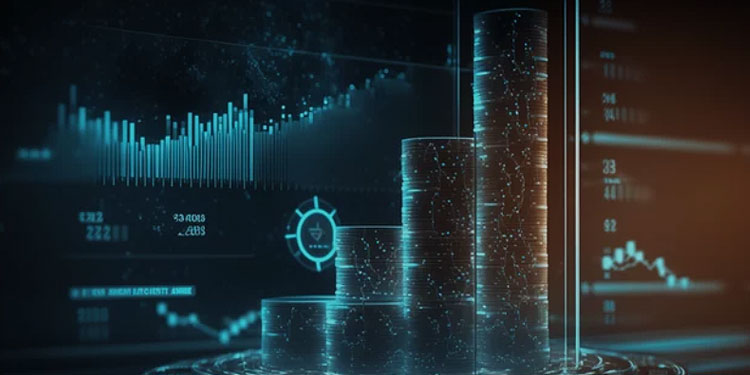Introduction
Algorithmic trading, also known as automated trading, has become increasingly popular in recent years due to the advancement of technology and the availability of vast amounts of financial data. Algorithmic trading refers to the use of computer algorithms to execute trades in financial markets. It has revolutionized the way investors trade, making trading faster, more efficient, and more precise. If you are an investor looking to trade cryptocurrency, use Chain Reaction. This article will examine the pros and cons of trading with automated strategies.
Pros of Trading with Automated Strategies
Increased Speed and Efficiency
One of the significant advantages of algorithmic trading is its speed and efficiency. Automated trading systems are programmed to execute trades at a high speed, which is impossible for human traders. The speed of execution can be crucial in fast-moving markets, where a few seconds can make a significant difference in the outcome of a trade. Automated trading systems can also process vast amounts of data in a matter of seconds, allowing traders to make informed decisions quickly.
Removes Emotions from Trading
Another significant advantage of algorithmic trading is that it removes emotions from trading. Human traders are subject to emotions such as fear, greed, and hope, which can cloud their judgment and lead to irrational decision-making. Automated trading systems, on the other hand, are programmed to follow a set of rules without any emotional interference. This removes the emotional element from trading and can lead to more consistent and rational decision-making.
Backtesting and Optimization
Automated trading systems can be back-tested and optimized using historical data. Backtesting involves running the algorithm on historical data to see how it would have performed in the past. This can help traders to identify any flaws in the system and make necessary adjustments. Optimization involves adjusting the parameters of the algorithm to improve its performance. Backtesting and optimization can help traders to fine-tune their strategies and improve their performance.
Access to Multiple Markets and Instruments
Automated trading systems can be programmed to trade across multiple markets and instruments simultaneously. This means that traders can diversify their portfolios and reduce their risk exposure. It also means that traders can take advantage of opportunities in different markets and instruments, which they may not have been able to do manually.
Cons of Trading with Automated Strategies
Reliance on Technology
One of the main drawbacks of algorithmic trading is its reliance on technology. Automated trading systems require reliable and fast technology to execute trades quickly and efficiently. Any disruption in the technology, such as power outages or connectivity issues, can result in losses for the trader. Additionally, the complexity of the technology used in algorithmic trading means that traders must have a good understanding of the system they are using and the potential risks involved.
Lack of Flexibility
Automated trading systems are programmed to follow a set of rules without any deviation. This lack of flexibility can be a disadvantage in fast-moving markets, where unexpected events can cause sudden price movements. Traders may miss out on profitable opportunities if their algorithms are not programmed to respond to such events.
Risk of Over-Optimization
While backtesting and optimization can improve the performance of an algorithm, there is a risk of over-optimization. Over-optimization occurs when the algorithm is fine-tuned to perform well on historical data but fails to perform well in real-time trading. This can lead to losses for the trader and may result in the abandonment of the algorithm.
Lack of Human Oversight
Another disadvantage of algorithmic trading is the lack of human oversight. Automated trading systems are programmed to execute trades automatically, which means that there is no human intervention in the decision-making process. While this can be an advantage in removing emotions from trading, it can also be a disadvantage as the system may make errors that a human trader would have been able to spot.
Conclusion
Algorithmic trading has revolutionized the way investors are, In conclusion, algorithmic trading has its advantages and disadvantages. It is essential to weigh the pros and cons carefully before deciding whether to use an automated trading system. Automated trading systems can offer increased speed and efficiency, remove emotions from trading, and provide access to multiple markets and instruments. However, they also have a reliance on technology, a lack of flexibility, a risk of over-optimization, and a lack of human oversight. Ultimately, the decision to use an automated trading system will depend on the trader’s individual preferences, risk tolerance, and investment objectives.


















